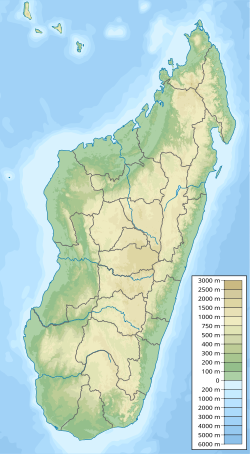| Ambolafotsy Formation | |
|---|---|
| Stratigraphic range: Turonian ~ | |
| Type | Geological formation |
| Unit of | Diego Basin |
| Sub-units | Lower, Middle and Upper units |
| Lithology | |
| Primary | Claystone, shale, sandstone |
| Location | |
| Coordinates | 13°48′S49°30′E / 13.8°S 49.5°E |
| Approximate paleocoordinates | 33°24′S40°24′E / 33.4°S 40.4°E |
| Region | Antsiranana Province |
| Country | Madagascar |
Location of the formation in Madagascar | |
The Ambolafotsy Formation is a Turonian aged geological formation in the Diego Basin of Antsiranana Province in Madagascar. It is a mostly terrestrial unit deposited during a marine regression close to the shoreline. The dinosaur Dahalokely has been discovered in the formation. [1]
